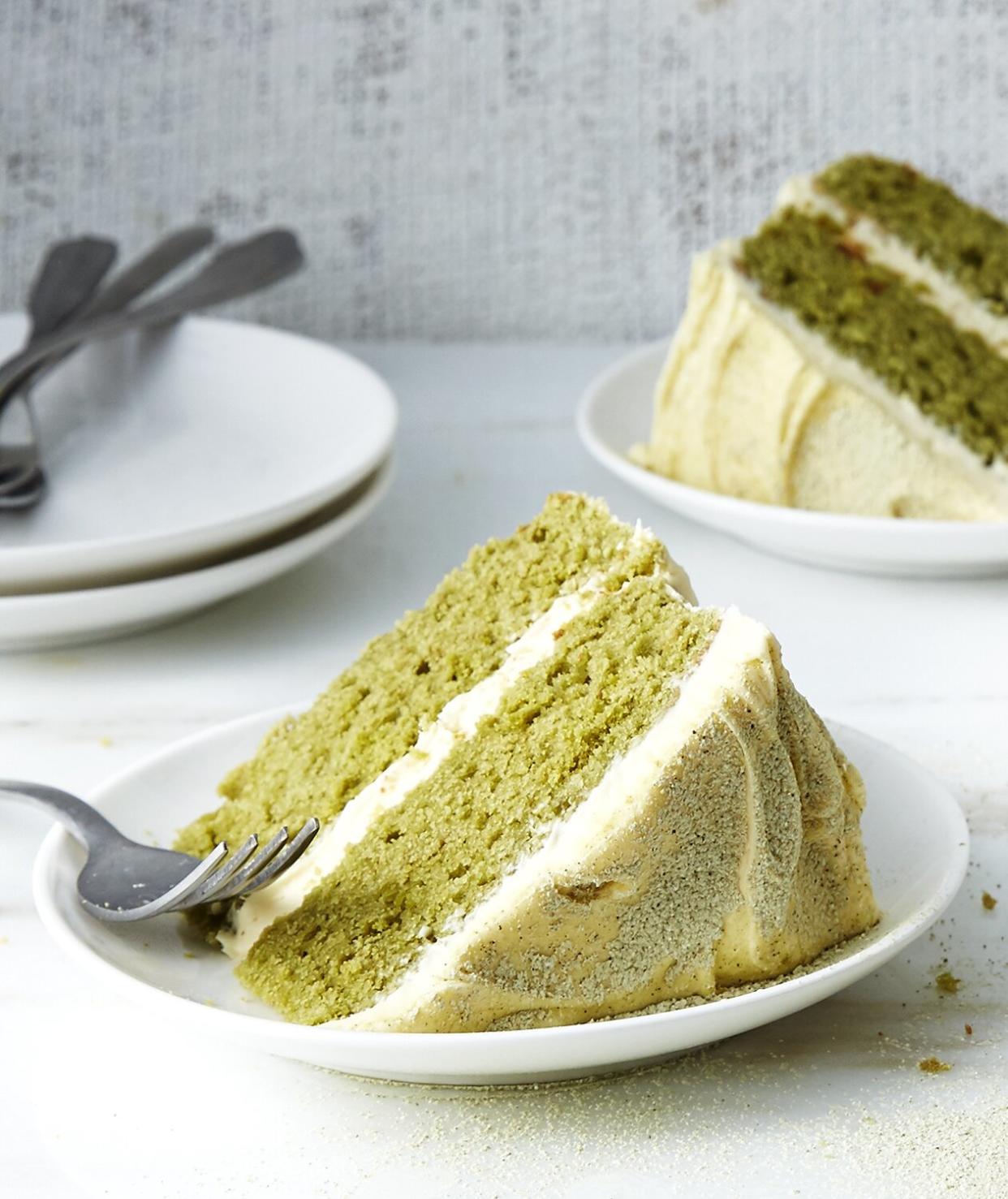The Difference Between Frosting, Icing, and Glaze

Greg DuPree
Buttercream Frosting
There's a reason buttercream frosting is so popular: It's easy to make. Just "cream" the butter (beat it for several minutes), then add sugar, a touch of vanilla, and salt! Light, fluffy and neutral-tasting, this frosting is simple to spread and complements all sorts of cake and cupcake flavors, such as our matcha cake with vanilla buttercream. Once you've nailed basic buttercream, try mixing in maple syrup for pumpkin cupcakes with maple buttercream frosting or chocolate for our chocolate buttercream.
Whipped Cream Frosting
Whipped cream frosting is made similarly to plain whipped cream: Mix confectioners' sugar, vanilla, and a little cream of tartar (about ½ teaspoon for every pint of cream) for stability. Because it's neutral in flavor and super airy and light, this frosting is a great choice for stacked berry cakes. For maximum volume and the smoothest texture, chill your bowl and whisk before starting, and use well-chilled heavy or whipping cream.
Cream Cheese Frosting
Carrot cake and red velvet cake seem to have the most ardent fans. Is it because people are passionate about carrots or those ruby-hued layers? Maybe so, but we'd bet it's the cream cheese frosting that tops these beloved treats. This thick, creamy, pleasantly tangy frosting is also great on dark chocolate, caramel, pumpkin, zucchini and banana cakes.
Cooked Frosting
Light and fluffy, this old-fashioned frosting is made by simmering cream or milk with flour until thickened, then cooling the mixture before blending it with creamed butter and sugar. Fun fact: It was the original topping for red velvet cake. It also works beautifully on sheet cakes, such as a birthday cake, which you can decorate with sprinkles or candy topping.
Swiss Meringue Buttercream
Fans of Swiss meringue buttercream love its shiny look and silky-smooth texture. Because it starts with beating egg whites and sugar in a double boiler–and a candy thermometer is often recommended–this frosting is among the fussier to make. But if you're up for the task, Swiss meringue buttercream will elevate a basic yellow cake to sublime heights.
Icing
Icing (including the popular chocolate icing called ganache) is thinner than frosting but thicker than glaze. While icings set quickly and stiffen as they dry, glazes also set but don't harden because of their lower sugar content. Icings and glazes are poured or spooned over cakes and other confections (like cinnamon buns), rather than spread like frosting.
Royal Icing
A favorite of professional bakers, easy royal icing hardens fast and shiny and is often used to decorate sugar cookies and fancy tiered cakes. Because it employs raw egg whites, use pasteurized eggs for this icing.
Glaze
Glaze is a simple mixture of confectioners' sugar and a liquid (such as milk, lemon juice, or water). It can be made in a variety of consistencies—from thick to thin—which dry to varying degrees of stiffness but do not harden. Drizzle your favorite glazes atop tea cakes, such as our glazed lemon pound cake; pastries, like our hot cross buns; cookies, such as our lollipop cookies; and last but not least, doughnuts! Glazes can also be flavored in all sorts of ways, from pomegranate to matcha, white chocolate and beyond!

